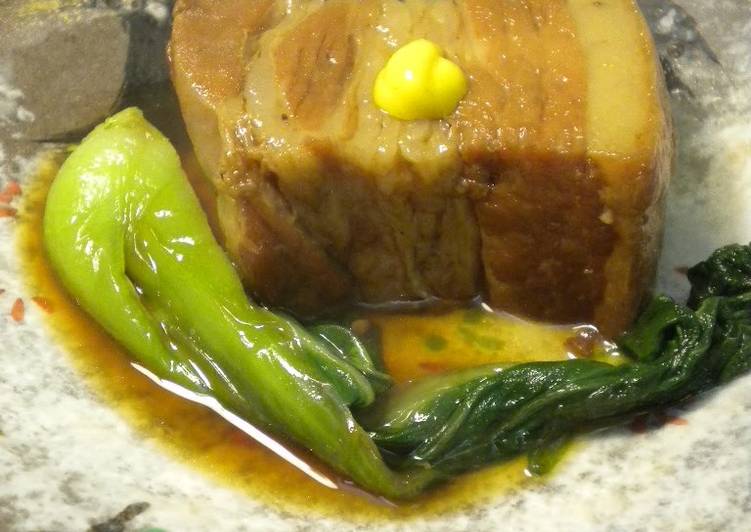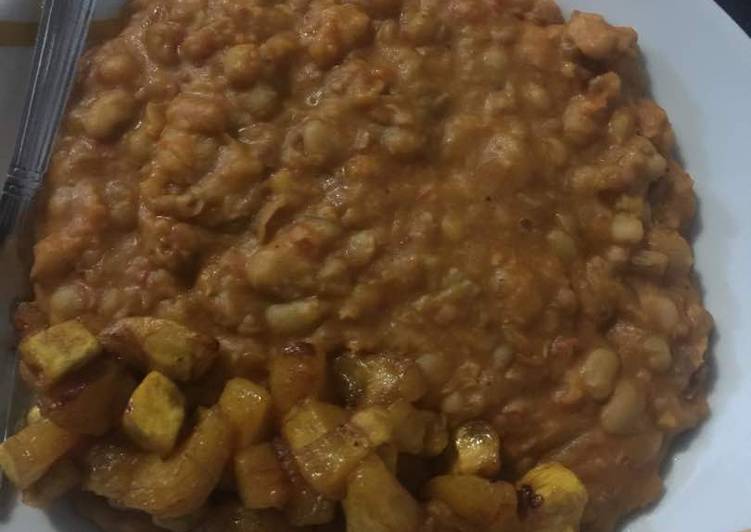
Hey everyone, hope you’re having an incredible day today. Today, I’m gonna show you how to prepare a special dish, japanese-style stewed pork chunks. One of my favorites. This time, I’m gonna make it a bit tasty. This will be really delicious.
Caramelising the pork before stewing it gives the brew a deliciously rich depth. This nourishing stew is inspired by the flavours of nabe, a traditional Japanese hotpot eaten in winter. But the extended time that this Japanese-style braised pork belly is simmered with ginger and scallions reduces the fat in the finished dish.
Japanese-Style Stewed Pork Chunks is one of the most well liked of current trending foods on earth. It’s enjoyed by millions daily. It is simple, it’s quick, it tastes delicious. They are nice and they look fantastic. Japanese-Style Stewed Pork Chunks is something which I have loved my entire life.
To get started with this recipe, we must first prepare a few ingredients. You can have japanese-style stewed pork chunks using 13 ingredients and 6 steps. Here is how you can achieve that.
The ingredients needed to make Japanese-Style Stewed Pork Chunks:
- Make ready 500 grams Japanese Pork Belly Meat
- Make ready For the Meat Seasoning
- Take 1 A) Green portion of white leeks
- Prepare 1 piece A) Ginger (with skin intact)
- Make ready 2 1/2 cup A) Water
- Get 100 ml A) Sake
- Take 1 pepper A) Red Chili Pepper
- Make ready For the glaze:
- Make ready 2 1/2 tablespoons+2 1/2 tablespoons Soy sauce
- Make ready 2 tbsp Sugar
- Make ready 1 Japanese mustard
- Prepare 1 Greens (bok choy, Japanese mustard spinach, spinach etc.) pre-boiled
- Get 1 Mustard paste
Cut the pork belly into pieces, and brown both sides in a frying pan. Kakuni (Japanese Braised Pork Belly) - Slow cooked pork belly in soy sauce glaze, serve with shiraga negi and egg on the side. Kakuni (角煮) is Japanese braised pork belly, and it literary means "square simmered" referring to the shape of this dish. I'm not usually into fatty meat but there is something.
Steps to make Japanese-Style Stewed Pork Chunks:
- Take the pork belly meat out of the fridge, and warm to room temperature (30 minutes~11 hours). You don't need oil if using a Teflon frying pan, cook over a medium heat until it turns golden brown evenly.
- The fat will render out during cooking, so cook while wiping the excess grease with a paper towel. Once it has turned golden brown, rinse the fat off quickly with water, and transfer to a pot. Add in A, and stew for 1 1/2 hours.
- It is ready to go once you can poke a toothpick through cleanly (this cooks in 20 minutes in a pressure cooker). Let it sit as-is overnight. The fat will harden as shown in the picture below.
- Cut off the hardened fat from the pork with a knife. Cut the pork into easy-to-eat portions (cut each piece into sixths), and add to the pot.
- Put the boiled broth onto the stove and turn it on, add half of the soy sauce, bring it to a boil and then reduce to a low heat, and stew for 20 minutes. Add the sugar and remaining soy sauce, and stew for an additional 20 minutes.
- Check the taste, and adjust by adding water if the taste is too strong. Top with Japanese mustard, and cover with the sauce and the ingredients stewed in the sauce.
The beef stew here will be unfamiliar to most cooks, though it has much in common with the classic American dish. Transfer chunks to a medium-size casserole. Add stock to the skillet, and cook over high heat, stirring and scraping until all. Scarica subito la foto Sapporostyle Japanese Noodles With Stewed Pork Belly. Continua la ricerca nella raccolta di iStock di immagini stock royalty-free con foto di Alga marina pronte per essere scaricate in modo semplice e rapido.
So that is going to wrap it up with this exceptional food japanese-style stewed pork chunks recipe. Thanks so much for reading. I am sure that you will make this at home. There’s gonna be interesting food in home recipes coming up. Don’t forget to bookmark this page on your browser, and share it to your loved ones, colleague and friends. Thank you for reading. Go on get cooking!


